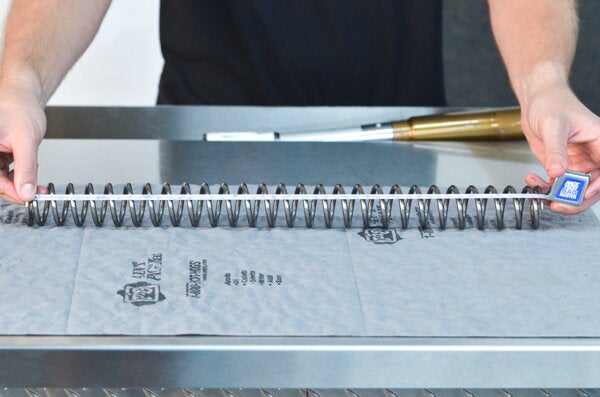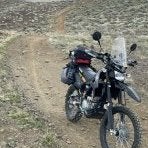
As off road motorcycles have evolved into the amazing machines they are today, suspension technology hasn’t been left behind…but many riders still find the process of getting their bikes “dialed in” difficult at best, almost impossible at worst.
We spent time talking to the people that understand these complex systems, experts who’ve spent their whole careers working with suspensions, and we’ve convinced them to share with us some of their tips (and tricks) when it comes to setting up your bike for optimal suspension performance.
Most of these “tips and tricks” are easy to implement and most of these procedures you have probably already performed. But getting all of them to work in unison is the key to a well set up machine. And when it comes to riding off road bikes, “Suspension is the key to being fast and smooth.”
Suspension experts who offered advice for this ThumperTalk WIKI feature are C-Cycle, Factory Connection, FCR Suspension and RaceTech, and we want to thank them for their input.

1) What common mistakes do riders make when setting up their suspensions?
In talking with the four vendors above, they seem to all agree that not setting the sag to match the rider’s weight was the most common mistake made by off-road motorcycle pilots (we cover this later in this article).
Other common suspension mistakes that riders often make are:
- Inaccurate compression and rebound damping adjustment(s)
- Setting suspension to stock levels before custom adjustments are made
- Incorrect spring/air rates for rider weight
- Pinching forks legs at the axle
- Insufficient grease in linkages
- Drive chain too tight
- Poor axle alignment
2) Can you describe the best (and simplest) way for riders to measure their sag?
Bob Luketic at FCR Suspension offered this explanation:
Take a measurement with the bike on a stand - typically the measurement is taken from the axle straight up to a solid mark on the fender.
Make sure these 2 points of reference are solid and that you measure from the exact same spots. You’ll need to write this number down.
Take the bike off of the stand, give it a few nice bounces to free up any stickiness in the linkage etc, and take the measurement from your 2 spots again, you will subtract this number from the 1st number and now you have your rider sag.
It’s always a good idea to do this with your gear on or allow for the extra weight of your gear if you’re in street clothes.
As a baseline if you are a 65 rider race sag should be 70-75mm's…an 85 rider--85-90mm's, and 125 and up 100-120mm's.
Most tuners we spoke to felt setting sag was so important, they have put instructional pages on their sites to fully explain the procedure:
Factory Connection Sag Setting Page
As a side note, a new product was released that can make measuring your sag on your own even easier, and it’s been reviewed by Team ThumperTalk. It’s called the Motool Slacker Digital Sag Scale…and Motool claims: ‘Rather than using an inaccurate mechanical sag scale, having to recruit a friend, or worrying if the measurements were taken correctly, the Slacker sag tool simplifies the process.’
3) Where should riders begin when tuning their new (stock) suspensions?
The tuner panel seemed to agree that the first thing to do is consult your owner’s manual and set the suspension to the stock settings. This includes setting spring rates and setting the sag as discussed above.
In this regard, Steve Ross at Factory Connection noted that “initial clicker settings are usually centered in the middle of the adjustment range to allow maximum adjustment in order to tune softer or stiffer”.
The RaceTech Staff added this advice: “The general rule of thumb is to start with proper spring rates. Without proper springs for your weight, the balance of the bike will be off and you won’t be able to get the sag numbers where you need them. The other thing to not be overlooked is the quality and freshness of the suspension fluids. Not all are created equal and fluid that needs changed will cause a loss of damping.”
4) What is the simplest, cheapest upgrade riders can do to their suspensions?
The experts agreed that having the correct spring rates are the best and cheapest upgrade you can perform, followed by fresh, clean fluids in suspension components and (again) setting your sag correctly.

5) What is the most common upgrade requested by customers?
Fork rebuilds with re-valving are the most popular upgrades all these tuners perform, and replacement springs are also in high demand. RaceTech Gold Valves were also mentioned by more than one vendor.
6) Can you offer any specific tips for motocross riders?
The tuner panel noted that a balanced bike is what riders should be striving for when addressing motocross suspensions. Let’s hear what they had to say about motocross riders suspension tuning.
C-Cycle: “Motocross requires good balance front to rear. Each machine brand has specific tuning for handling attributes.”
Factory Connection: “Motocross riders need to find the right balance between plushness for the braking and accelerating bumps, but still having enough bottoming resistance for jump faces and harsh landings. It’s OK for the suspension to bottom a couple of times a lap as long as it’s not too harsh. In-fact bottoming is good as it’s an indication that all the available travel is being utilized.”
FCR: “Stay up on your suspension maintenance. We see so many riders that are riding on suspension that’s so worn out that it’s really dangerous…an oil change and service goes a long way and can catch anything that may be getting ready to fail. Some bigger companies will tell you to service it every 20 hrs…when we see a suspension that’s been beat on for 20 hrs it (usually) needs a complete overhaul and it can be costly. We recommend an oil change and check up every 10hrs, it's super cost effective and really is the best way to stay safe and to keep that machine on the ground!”
RaceTech: “For motocross we focus on a fork setup that is firm enough to not dive and deal with braking bumps and chop. We need good bottoming resistance for jump landings all while providing a plush feel in the hands that tracks up nicely. The shock setup for motocross requires a plush initial setup for traction and we want to keep the tire tracking the ground in acceleration chop. While still being plush initially, we need a shock that’s firm enough to hold itself up in ruts and provide bottoming resistance for sharp edges and jump landings. We aim for our setups to leave the shop with valving settings that land the clickers in the middle of their ranges to allow for plenty of adjustment and tuning. Gold Valves also help make the clickers more effective.”
7) Can you offer any specific tips for desert riders?
Addressing your motorcycle’s high speeds and the obstacle-filled terrain encountered in the desert was important to the panel and here’s what they said about desert riders suspension tuning.
C-Cycle: “Desert racers (require) stiffer suspension settings.”
Factory Connection: “Desert racers face an incredibly varied terrain; the key is to set up for 80% of the riding and always being mindful of any high speed or river wash/sand sections. Desert racers normally need to be a little stiffer set up than you’re typical off-road rider.”
FCR: “Tips for desert riders, especially desert riders, is to really, really get a qualified shop to help get the suspension set up for that type of riding. The speeds are so different than say…an enduro rider back east... (so) take some time and really, really set that stuff up good!”
RaceTech: “For desert riders we focus on a fork setup that will hold up in high speed rolling whoops, while keeping a plush feel in the rider’s hands. We also re-valve steering stabilizers which is extremely important for desert. This helps keep the rider from fatiguing by not having to work so hard to keep the front end straight and avoid headshake. The Gold Valves for steering stabilizers help create more effective adjusters and improve the adjustment range. For the shock, we look for a plush initial setup for small rocks and chatter while still firm enough to not blow through or bottom in rollers.”
? Can you offer any specific tips for enduro riders?
Enduro riders are always looking for some additional “plushness” when hopping logs and jumping rocks and roots all day. The tuner panel agreed and offered this advice.
C-Cycle: “Enduro (bikes require) softer suspension settings.”
Factory Connection: “Depending on the extent of rocks and roots, G-outs, elevations changes and jumps, usually a softer and plusher setting is desired. Rebound control is always important with off-road riders and is often overlooked. A lighter rebound adjustment is typically preferred to maintain a responsive fork and shock to react to the rock and root terrain.”
FCR: “Tips for enduro riders would be to keep your suspension clean. Typically the enduro guys that (FCR) helps out - they are always in the slop and it can really wreak havoc on the components, especially the fork seals and shock linkage and swingarm pivots. You’d be amazed at how (much) dirt, sand, and water can find their way into the seals and bearings…and if your linkage and swingarm aren't working smoothly there’s no way your shock will work to its potential.”
RaceTech: “For enduro, (RaceTech) looks for a setup that focuses on a more plush setup front and rear. We look to provide great traction for technical sections and to absorb rocks, logs, and roots. This is a much plusher setup at low speeds.”

9) What modifications does your firm perform for riders in search of suspension improvements?
C-Cycle: “C-Cycle provides education, rebuild and custom tuning. We also provide chassis, bearings, wheel building, lowering and ergonomics services.”
Factory Connection: “Factory Connection changes springs and performs custom valving on forks and shocks based on rider needs. Models are different and every rider is different. Because of this, Factory Connection has an expert team of technical staff ready to take your calls and talk through your needs making recommendations on set up, springs and valving. We personalize each suspension component to each rider’s needs and preferences. Factory Connection is a suspension only shop, with company owned, company operated locations across the USA offering a wide range of suspension parts and services including: Re-valve and Rebuild services. Factory Connection Springs, Factory Connection Oil, Factory Connection Specialty parts and OEM wear parts.”
FCR: “The most common upgrade that is requested here would be two things, the proper springs and fork rebuilds.”
RaceTech: “Race Tech specializes in personalized suspension setups that provide a plush feel with drastically improved bottoming resistance. For most off-road and motocross bikes, that means RT Hi-Performance Springs and Gold Valves along with a personalized valving setup.”
“We offer a full line of suspension products, parts, and tools. Pretty much everything you could ever need to work on and setup suspension; Paul even wrote the Motorcycle Suspension Bible and hosts Technical Edge Suspension Seminars where he has taught most of our competitors how to tune suspension. G3-S Custom Shocks, Gold Valve Fork Emulators, Rebound Valves, G2-R Cartridge Kits, and of course seals, bushings, and fluids are also very popular items.”
“Every setup that leaves our door is 100% guaranteed to exceed your highest expectations and Race Tech products are made right here in the USA. We strive to provide a fantastic product, but also to provide the best support in the industry to make sure the riders who choose Race Tech love their setup. Many ThumperTalk members have my personal cell number available to them 24/7, 365 days a year if they ever have any setup questions and I offer that to anyone that chooses Race Tech.”
In conclusion, there is no “magic bullet” when it comes to suspension setup. All parts on your machine must work in unison to provide the best performance. Riders need to “go back to stock” and establish a baseline for suspension tuning and write these settings down so you can keep track of your progress and remember that there are experts like the ones mentioned here that can help you set up your machine for the optimal responsiveness in virtually every type of terrain.
Article Resources and Contact Information:
- C-Cycle Suspension Services - East Hampton, Connecticut: 860-267-1710
- Factory Connection - National and International Locations: 800-221-7560 (USA)
- FCR Suspension - Palestine, Ohio: 330-426-4600
- RaceTech Suspension - Corona, California: 951-279-6655
Photo Credit: RaceTech Suspension
Read More Articles on Motorcycle Suspension
Have Motorcycle Suspension Questions? Post them in our dedicated Suspension Forum!






Recommended Comments